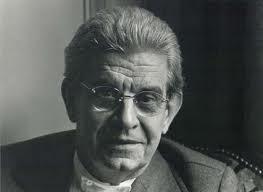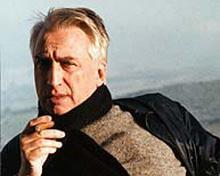Best known for his theories of ideology and its impact on politics and culture, Louis Althusser was a member of the French Communist Party, he revolutionized Marxist theory. Through this work, we’ll know how Althusser interpreted and developed Marx’s work and the ideology and its significance for culture and criticism
From of all, Althusser mentioned the necessity of the reproduction of the material conditions of production and the reproduction of labour power which is ensured by the quantity of value (wages). All the “know-how” and “rules” provided at school as techniques and skills are useful to the future production, Althusser argued the reproduction of labour power should submit to the ruling ideology for the agents of exploitation and repression, and he thought we should post questions about the essential of the existence and nature of superstructure from the point of view of reproduction. Then Althusser analyzed the State and Ideology and he explained the conception of “descriptive theory”—a beginning of the theory but requires a development of the theory which goes beyond the form of “description”—to help understand further the mechanisms of the State in its functioning as State power. Then he described the distinction between State power and State apparatus.
About the infrastructure and superstructure, Althusser insisted Marx’s theory, the economic base is the basement of the politico-legal and ideology, and the superstructure has a “reciprocal action” on the base.
Althusser listed a large number of ideological State apparatuses in capitalist social formations: the educational apparatus, the religious apparatus, the family apparatus, the political apparatus, the “cultural” apparatus, etc. Althusser clarifies the distinction between the Repressive State Apparatus and the Ideological State Apparatuses and emphasized their double “functioning” by repression and by ideology. “no class can hold State power over a long period without at the same time exercising its hegemony over and in the State Ideological Apparatus ”(page 20), Althusser said the Ideological State Apparatus is secured by the ruling ideology—the ideology of “the ruling class” which holds State power.
The ideologies are realized in institutions, in their rituals and their practices, in the Ideological State Apparatus. The ideological hegemony is the result of political and ideological struggles and it contributes to the reproduction of capitalist relations of production—the relation of exploited to exploiters and exploiters to exploited. These mechanisms functioning for the capitalist regime are always concealed by the ideology of the School—one of the essential forms of the ruling bourgeois ideology, which has replaced the Church—the old dominant Ideological State Apparatus.
Then, there started the discussion of “ideology”, Marx defined “ideology” as “the system of the ideas and representations which dominate the mind of a man or a social group.” Althusser cited the opinion of Marx and The German Ideology, he expressed: ideology has no history. It is conceived as a pure illusion, all its reality is external to it. But Althusser thought ideology has a history of its own, and adopted Freud’s expressions—ideology is eternal, exactly like the unconscious.
To approach the central thesis on the structure and functioning of ideology, Althusser presented two theses to state the imaginary from and the materiality of ideology. First, we take ideology as illusion or allusion, it is “interpreted” to discover the reality behind the imaginary representation of the reality, this is a method used by cynical men to control others minds or it could respond to the alienation in the imaginary of the representation of men’s conditions of existence. The ideological State apparatuses and their practices are the realizations of ideology, an ideology always exists in an apparatus and its practices, the existence is material. People inscribe their ideas as a free subject in the actions of their material practices, which are governed by material rituals within the material ideological apparatus.
Althusser deemed all ideology has the function of “constituting” concrete individuals as subjects; man is an ideological animal by nature. We are all ideological subjects, a material individual is always already an ideological subject—the elementary and peculiar ideological effect. We also function in the practical rituals of ideological recognition. Althusser took the existence of ideology and the hailing or interpellation of individuals as subjects as the same thing, this argument resembles to Lacan’s Mirror Stage. What happens in ideology also takes place outside ideology. Then Althusser gave us an example of the Christian religious ideology—God duplicates himself to a man, a subject subjected to God, and interpellates more individuals as subjects to submit freely to the commandments of the Subjects. There is a mutual recognition of subjects and Subject as well (mirror recognition). All the subjects are inserted into practices governed by the ritual of the Ideological State Apparatus.
Althusser’s writing changed the face of literary and cultural studies, and continues to influence Marxist Philosophy, his argument of interpellation and the concept of Ideological State Apparatuses have been popularized among later philosophers.


